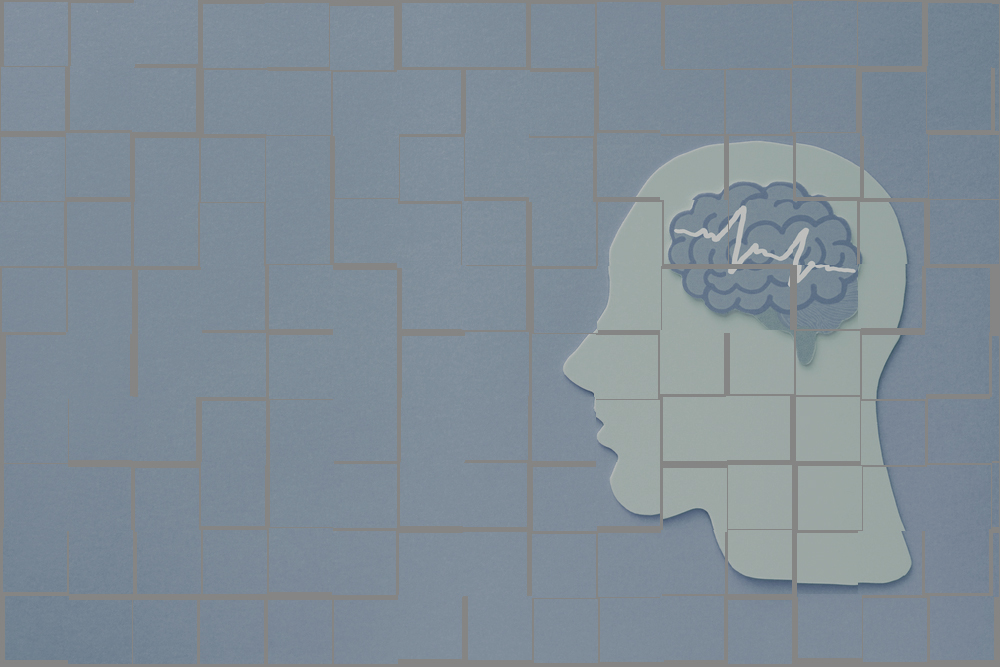Curve Health Announces Major Advancements in Patient Care Optimization and Innovation. Learn more
Curve Health Announces Major Advancements in Patient Care Optimization and Innovation. Learn more


Gabapentin represents a widely prescribed medication. It can treat seizures and nerve pain caused by shingles.
from $0.56 per pill
Gabapentin is employed by patients for miscellaneous neurological and pain-related conditions. Gabapentin was originally crafted as an anti-epileptic remedy. Nevertheless, it has attained popularity for its effectiveness in dealing with neuropathic pain, restless leg syndrome, and off-label conditions such as anxiety disorders. The article presents a detailed review of Gabapentin, including its uses, principle of action, strong points, adverse effects, and considerations for safe utilization.
Gabapentin was first synthesized in the 1970s by scientists at Parke-Davis (a subsidiary of Pfizer). The objective was to develop a remedy that mimicked the neurotransmitter gamma-aminobutyric acid (GABA). Although structurally related to GABA, Gabapentin does not act directly on GABA receptors.
The U.S. Food and Drug Administration (FDA) authorized it in 1993 as an adjunctive treatment for epilepsy. After that, Gabapentin was approved for postherpetic neuralgia in 2002. Gabapentin is likewise helpful for patients dealing with pain and sleep interference linked with postherpetic neuralgia.
Nowadays, Gabapentin has numerous medical applications. The medication is primarily employed as an adjunctive treatment for partial seizures in both adults and children. Brain cells should operate at a definite rate to function properly. However, they need to work much more speedily than normal during a seizure. Gabapentin assists brain cells in averting from operating as rapidly as a seizure demands them to. Thus, seizures can be stopped when they are merely starting.
One of the most widespread applications of Gabapentin is in the treatment of neuropathic pain. In particular, it deals with such conditions as diabetic neuropathy and postherpetic neuralgia. As known, Gabapentin is not officially licensed for dealing with fibromyalgia. Nonetheless, it is extensively employed since fibromyalgia can respond to the same medications as neuropathic pain.
Also, Gabapentin enacarbil (a prodrug of Gabapentin) has been FDA-approved for moderate to severe restless leg syndrome. This is a neurologic disorder that makes the legs feel discomfiting. This drives to an irresistible feeling of desiring to move the legs to make them relaxed and comfy.
Off-Label Utilization
Being an anticonvulsant and pain-relieving medication, Gabapentin has several off-label uses, specifically dealing with alcohol withdrawal syndrome. It assists in diminishing symptoms, like insomnia, cravings, and anxiety. What’s more, the remedy can be helpful for promoting abstinence and averting relapses to heavy drinking. Gabapentin has been likewise explored as a treatment for withdrawal symptoms linked with benzodiazepines and opioids.
Some medical specialists prescribe Gabapentin off-label to govern generalized anxiety disorder (GAD) and social anxiety disorder.This medication is believed to operate by affecting neurotransmitters in the human brain, such as gamma-aminobutyric acid (GABA). GABA assists in regulating anxiety and stress responses in the brain. This implies that elevating levels can trigger a calming effect, diminishing feelings of anxiety and contributing to relaxation.
Gabapentin functions differently despite its structural similarity to GABA. It binds to the alpha-2-delta subunit of voltage-gated calcium channels in the central nervous system. By this, it diminishes the release of excitatory neurotransmitters. Such an action helps dampen nerve activity, making it effective in coping with seizures and chronic pain conditions.
Every capsule of Gabapentin involves 100mg, 300mg, or 400mg of the drug. Every tablet incorporates 600mg or 800mg of remedy. If patients intend to employ Gabapentin as a liquid, 2 ml is ordinarily the same as utilizing a 100 mg tablet or capsule. The appropriate dosage of Gabapentin varies based on the condition being treated, patient age, kidney function, and individual response to the medication.For neuropathic pain (postherpetic neuralgia), the maintenance dose is 1800-3600 mg/day, divided into three doses. This dosage of Gabapentin is effective and well tolerated in dealing with neuropathic pain by adults. For epilepsy (seizure control), a maintenance dose of 900 mg to 3600 mg per day, divided into three doses, may be instructed. This is a usual dose for adults and older children (aged 12 and over). The dose for younger children (aged 6 to 12) varies depending on their weight. The effective approach for the successful introduction of medication in patients with moderate to severe primary restless legs syndrome can involve the start of treatment employing 300 mg once daily ordinarily in the evening. The dose is then elevated to 600 mg once daily. Yet, there is a need to mention that this approach has not been experimented in clinical tests. The medical specialist may prescribe a low dose to begin treatment and then elevate it over several days to bypass adverse effects. Once a patient detects the most suitable dose, it will typically stay the same.

Gabapentin is an actively picked medication by patients for a reason. First of all, it delivers effective pain relief. Gabapentin provides people with relief where traditional painkillers fail. The remedy is especially beneficial for nerve pain. Secondly, Gabapentin is ordinarily a well-tolerated medication. It has a diminished risk of severe adverse effects in contrast to opioids. The good news is that Gabapentin is non-addictive. Unlike opioids and benzodiazepines, this medication has a lower potential for abuse. At the same time, it is worth underlining that misuse cases have been reported.
As patients claim, Gabapentin is effective for nerve pain, epilepsy, restless leg syndrome, and other conditions. Nonetheless, it can trigger a range of adverse effects, categorized as mild, moderate, and severe. Mild side effects are widespread and ordinarily do not require medical assistance unless they persist or worsen:
Gabapentin is considered a pretty safe medication when employed as prescribed. Nonetheless, excessive utilization or accidental ingestion by patients can drive to overdose probability. This creates serious health risks.
Patients need to swallow tablets or capsules whole with a glass of water. Avoid chewing them.People can employ Gabapentin with or without food. Nonetheless, it is recommended to do the same each day. The task of patients is to space their doses evenly throughout the day. For instance, a person can employ one dose in the morning, early afternoon, and at bedtime.If you take a liquid, it ordinarily comes with a plastic spoon or syringe to gauge the needed dose. Ask the medical expert for a spoon or syringe if you do not have it. Avoid employing a kitchen spoon since it will not gauge the proper amount.
Gabapentin is not classified as a controlled substance in the majority of regions. Nonetheless, reports of misuse and dependence have surfaced, especially among individuals with a history of substance abuse. Some people misuse it for its calming or euphoric effects. This drives to concerns about addiction potential.
Gabapentin may seem helpful as an anticonvulsant medication for nerve pain, epilepsy, and occasionally off-label conditions such as anxiety or migraines. Nevertheless, it is not suitable for everyone. Let’s consider the primary contraindications for Gabapentin utilization:
Gabapentin is effective for numerous conditions. Nevertheless, it is not an ideal variant for every patient. Consultation is needed to determine if Gabapentin is the right remedy based on the medical history and current health conditions of patients.
Gabapentin can interact with miscellaneous substances, including other medications, alcohol, and certain supplements. Comprehending these interactions is crucial to bypass adverse effects and ensure the effectiveness of Gabapentin.
In particular, Gabapentin may interact with several prescription and over-the-counter medications, such as strong painkillers, antidepressants, antacids, and antipsychotic medicines for mental health issues.
Consuming alcohol while employing Gabapentin can drive to reinforced dizziness, drowsiness, and impaired coordination. In some cases, it may worsen side effects such as confusion and breathing difficulties.
Combining herbal remedies and supplements with Gabapentin is not recommended as well. Some herbal medications can make patients feel dizzy or drowsy. Mixing them with Gabapentin can aggravate these adverse effects.
Gabapentin is a valuable medication with a broad range of applications, from epilepsy and neuropathic pain to anxiety and withdrawal governance. While it is ordinarily well-tolerated, potential side effects and risks should not be overlooked.
Patients need to employ Gabapentin under medical supervision to ensure safe and effective treatment. If you are considering Gabapentin for your condition, consult the medical expert to determine if it is the right variant for your circumstances.
Does Gabapentin work?
Gabapentin is effective for nerve pain, seizures, and some off-label uses, but its effectiveness varies by condition and individual response. It may take time to showcase results and can have adverse effects.
Is Gabapentin accessible without a prescription?
Gabapentin is a prescription medication in the majority of countries, implying it cannot be legally obtained without a doctor’s prescription. Some regions have stricter regulations due to concerns about misuse and dependency.
Is Gabapentin safe?
Gabapentin is safe when employed as prescribed, but it can trigger side effects like dizziness, drowsiness, and coordination issues. It may likewise have risks of misuse, dependency, or withdrawal if not utilized properly.
Explore a new horizon of seizures and nerve pain treatment with Curve Health's innovative telehealth services.
(833) 824-2878